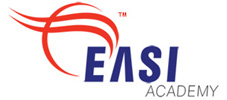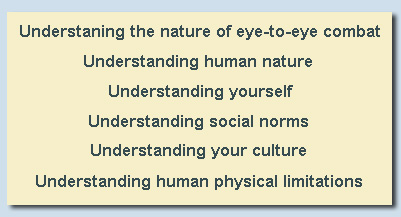 |
Introduction |
What are the pressing questions that nearly every player and coach asks, or seeks answers to? What is correct technique? What is the best way to develop correct technique? Why are play and practice so different? What is the right mix of conditioning and skill training? What is the right mix of play versus practice? How do I work with parents who keep interfering with my coaching decisions? Why does "thinking" interfere with stroke execution? What is the best development process for a 5 year old child? These are but a few of the questions on every coaches mind because the answers to such questions can make the difference between a player becoming a champion or becoming a tennis dropout.. Tennis seems like a simple subject until you have to face such questions as stated above. In reality, the complexity of tennis is related to the level of achievement a player and coach jointly seek to achieve. At the recreational level, Dick Gould constructed a simple program that got beginning adults playing in just a few lessons. At the advanced level, he designed a new serve motion for McEnroe without which McEnroe may never have achieved the professional success that he did achieve. So is tennis simple or complex? It depends. Optimally, a coach will develop the skills to work with both recreational and advanced players. To do this requires knowledge and experience. This textbook provides knowledge, not experience. No text stands alone, not even a mathematics textbook. Without experience, the value of knowledge is highly limited. The world we live in is empirical first and analytical second. By reading, or even studying this text, you will not gain experience and you will not be able to make good use of the information contained here. To benefit from the knowledge provided here you must commit to experiment with the ideas and explore alternatives on the court, not in the classroom. So what does this textbook provide? This textbook will provide the coach or student with the inform ai ton needed to answer many of the pressing questions of tennis stated above. It will provide factual scientific information needed to make good decisions about player development. While the organization of the text must follow some logical format which will be explained below, the actual derivation of the information in the text follows from an analysis that starts with the final objective of the text: producing successful tennis players at the tournament level. With this as our ultimate aim, we began the analysis at the mental game and derived the subsequent information through a logical scientific process based on the objectives of the mental game.
The particular sciences needed are many: Neuroscience is the base around which the mental game is analyzed and organized, but psychology, sociology, exercise science and more are needed. In addition to science, history contributes to understanding the mental game and the development of strategy and tactics. In general, the mental game is complex, more so than the physical game, and its many facets have directed the development of the physical dimensions of this text. Understanding the mental and physical dimensions of tennis are meaningless if this understanding cannot be conveyed to the student effectively, and, equally importantly, efficiently. The efficiency of the training process is of considerable significance because when every minute is utilized efficiently, the player is able to advance farther and faster than when the instructor uses inefficient teaching methods. A principle objective of this text is to explain efficient training methods. In general, the methods presented in this text will be dramatically different from conventional and traditional teaching methods. This difference arise from the utilization of the most recent research into the human learning process. This text is organized into three parts based on the requirements of the human learning process and the mental and physical processes required to prevail in an eye- to-eye combative sport. As stated in the Preface, this text is to be comprehensive, integrated and scientifically grounded. It must draw on the best work done to date, integrate that work with new ideas and provide an advancement and an original contribution to the field of tennis training and instruction. To accomplish these goals, an organization of the text is needed that facilitates achieving these goals. This implies, in turn, that the entire subject matter must be grounded in the fundamental objective of tennis at the advanced level. These objectives may be divided into two headings: (1) Winning and (2) personal growth through the medium of competition. In turn, these two objectives rest on only one pillar: Understanding The Mental Game. To carry out the objectives of this text dictated by an understanding of the mental game requires physical acts. Hence, there is the problem of providing the physical skills and abilities to compete in the game of tennis. This, in turn, depends on the ability of the student-coach relationship to provide the framework for the coach to convey to the student the knowledge and skills to compete. Based on the foregoing comments we may conclude that there are three subject areas into which this text should be divided: (1) Developing the Mental Game; (2) Developing the Physical Tools needed to compete; and, (3) Learning and using the right educational processes needed to provide efficient, unambiguous and effective instruction to the student. Of these three areas, nothing can proceed without an understanding of the principles and nature of instruction and player development, which is Part ONE of this text. The decision as to whether Part TWO should be the mental dimension of tennis or the physical dimension of tennis can be made by the fact that understanding the mental game is just an abstraction, pale and colorless, without experiencing the physical dimension of tennis. This dictates that Part TWO must be the physical development of the student (the physical dimension of tennis); Part THREE, therefore, must address development of the mental game or the mental dimensional of tennis. Never-the-less, Part TWO must have some links to the mental game in order that drills, exercises and physical development be meaningful to the student. Thus we see there is no completely clean partition of the subject of tennis into clear, distinct, and independent parts; there must be some overlap and inner connection between Parts ONE, TWO, and THREE, throughout the text. Part ONE, Successful Player Development, explains the human learning process, the elements of successful player development, the complexities of coaching, the impact of parents on players, and the factors of character in player development. This is summarized in Table 1.
Part TWO, The Physical Dimension of Tennis, covers Fundamentals, Technique, Physical Development and Dynamical Development of the player. This is summarized in Table 2.
Part THREE, The Mental Dimension of Tennis covers the nature of winning, mental basics, Neuropsychology and neurobiology of match play and Psychology and sociology of match play. This is summarized in Table 3.
|
||||||||||
